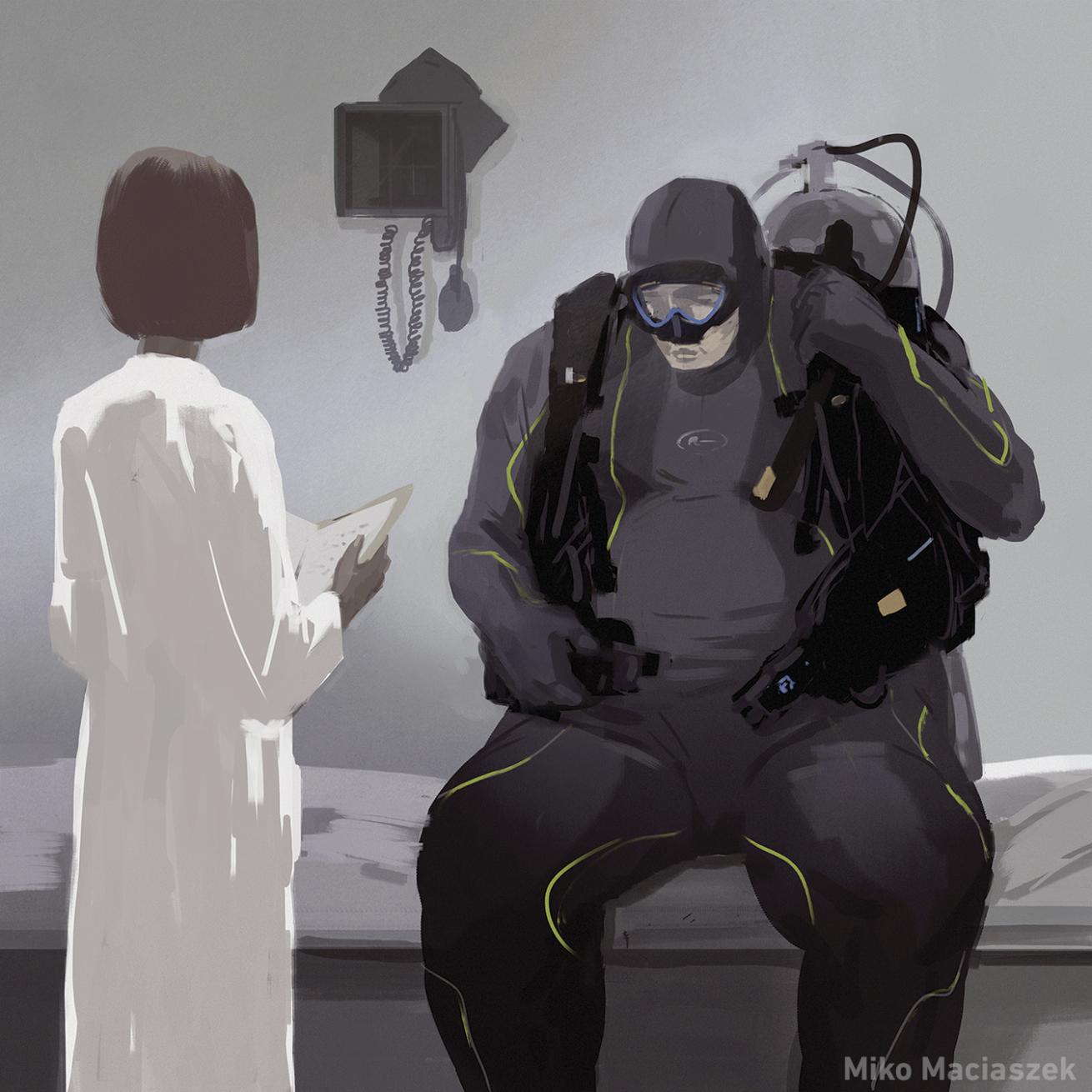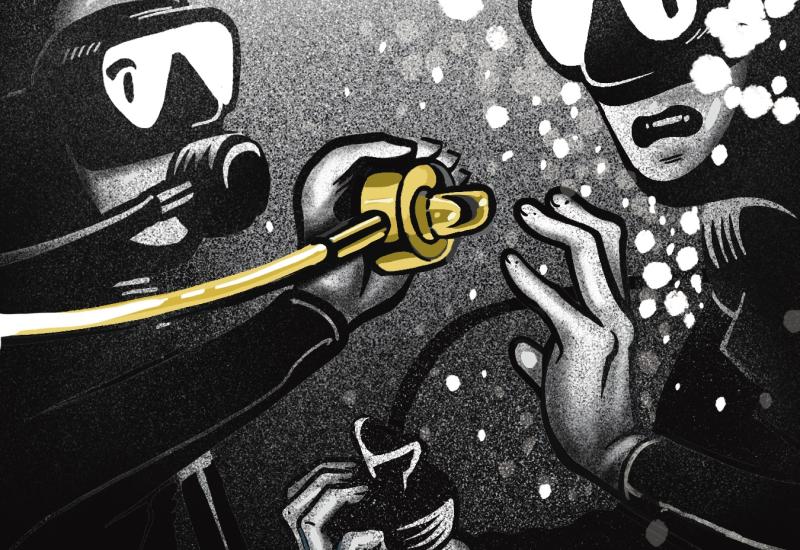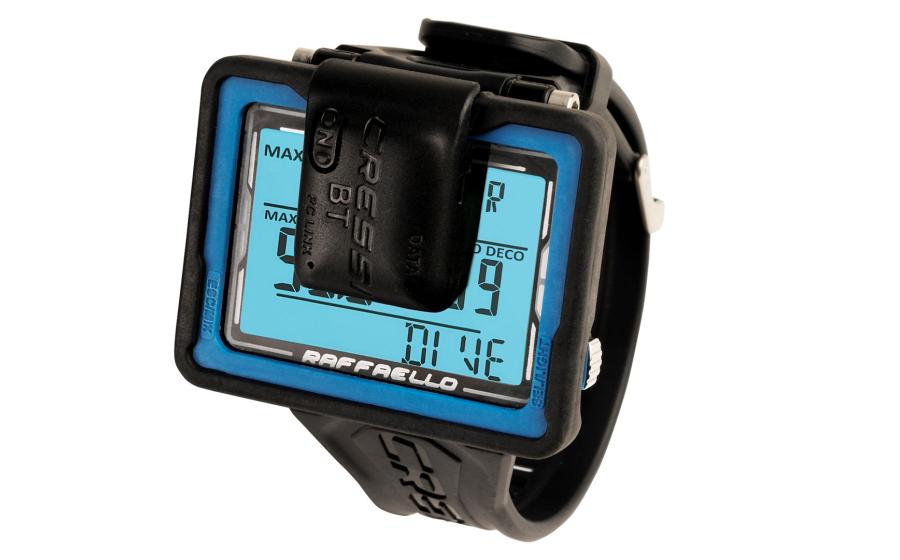Lessons for Life: The Fatal Consequences of Being Out of Shape

Physical fitness is crucial for scuba diving — so take care of yourself and live to dive another day.
Miko Maciaszek
Abe knew he needed to get in better shape. His doctor told him he was morbidly obese, and he was trying to do better. At least he could still dive. When he was neutrally buoyant, Abe didn’t notice his health problems.
While ascending from a deep wreck, Abe was struggling to swim upward. Something wasn’t right, and he knew he needed to get to the surface. He released his weight belt, but he still couldn’t ascend.
THE DIVER
Abe had been diving a long time and was very experienced. He was certified as a divemaster and really enjoyed being in the water. He loved to dive.
What he didn’t love was his constant struggle with his weight. It had been a problem most of his life, and now, at age 50, he was discussing options with his doctor to get things under control.
THE DIVE
Diving in a group of three, Abe was with his two regular dive buddies. They were making a boat dive to explore a wreck that each had dived before. Abe and his buddies were all trained in technical diving techniques, so they were making a decompression dive to 125 feet. Although it is possible to dive to that depth without planned decompression, they wanted to stay on the wreck longer than no-decompression limits would allow. They planned to make several stops on the ascent
to allow their bodies to off-gas the accumulated nitrogen.
Nearing the end of the dive, Abe signaled that he was ready to ascend. His buddies noticed he looked uncomfortable with something, but he didn’t indicate he was having any issues. They all agreed and moved to the anchor line to begin their ascent.
THE ACCIDENT
Moving from one decompression stop to the next, Abe’s buddies noticed he was adjusting his equipment, but he never signaled to them he was having a problem. One of the divers indicated it was time to move to the next stop depth, and they continued their ascent. When they arrived at the shallower depth, Abe’s buddies realized Abe was no longer with them. They looked around beneath them, but there was no sign of Abe anywhere. Because of the amount of time they already had spent in the water, and their decreasing air supply, they could not descend and attempt to look for Abe without jeopardizing their own lives.
Both divers had 20 more minutes in the water before they could reach the surface and let anyone know that Abe was missing. The boat crew looked for Abe, but their efforts were unsuccessful. They had limited resources to perform a complete search at that depth.
Another group of divers found Abe’s body on the wreck 10 months later. He had attempted to drop his weight belt, but it had become entangled in the collection bag he had clipped to a D-ring on his BC.
ANALYSIS
It is impossible to accurately determine the triggering event that got Abe in trouble, but his inability to perform a self-rescue on the dive, and subsequently deal with the entangled weight belt, led to Abe’s fatality.
Abe was morbidly obese. According to the medical community, someone who is morbidly obese is 100 pounds over his or her ideal body weight, has a body mass index (BMI) of 40 or more, or has a BMI of 35 or more and experiences obesity-related health conditions. BMI is a statistical number and isn’t infallible. Some people with large amounts of muscle have high BMI numbers but are not unhealthy.
Obesity is not a contraindication to diving. In fact, some groups use diving as therapy to get sedentary individuals moving, precisely because being neutrally buoyant in the water relieves pressure from joints that can cause the obese to be even more sedentary. Obesity can, however, make a diver less flexible and less able to care for himself in the event of a problem. Obese divers often have specially trained buddies who are able to handle emergencies. In Abe’s case, he released his weight belt when he realized he was in trouble, but when the belt became entangled in his collection bag, he couldn’t see it or reach it. He was still negatively buoyant and couldn’t make an ascent.
There are many standards or guidelines for what is considered fit enough to dive. For more information, contact a diving medical physician or Divers Alert Network. One big concern, aside from having the exercise capacity to respond to problems, is the medical issues, such as high blood pressure, heart disease and respiratory diseases, that come with obesity.
When planning a decompression dive, it is important to plan for what happens should an emergency arise. In this case, Abe’s buddies were unable to descend to look for Abe without risking their own lives. They would have begun reabsorbing nitrogen and would have had to start their decompression all over again. They didn’t have the breathing-gas supply available for that, especially not if they had to descend to the wreck, perform a search and then ascend with their friend’s body.
The dive-boat surface support didn’t have additional breathing gas or enough divers on board prepared to perform a search-and-recovery operation at that depth. Although no one wants to plan for a failure or a problem, technical divers who are planning to make technical dives have to create contingency plans for when things go wrong. They should have had a system in place to signal the boat that there was a problem, and there should have been two divers on the surface who could have responded to the emergency, diving to the shipwreck to begin an immediate search for the missing diver.
In short, we don’t know the exact cause of this accident. There were many contributing factors, including Abe’s physical health and obesity, which interfered with his ability to rescue himself when a problem arose, and a lack of a contingency plan to initiate a rescue in the event of a problem.
LESSONS FOR LIFE
1. Stay Fit Scuba diving doesn’t require you to be an Olympic-class swimmer, but you do need to be generally fit and comfortable in the water. Talk to a physician who is familiar with diving to determine your fitness level for diving, and initiate an exercise protocol to keep fit.
2. Check Your Gear Take a close look at your gear configuration. Can you jettison your weights in an emergency, or is your weight belt, release or harness covered up by the other gear you are carrying? The ability to release your weights could save your life.
3. Make A Plan Develop an emergency plan for every dive site and diving situation. Make sure you have the ability to perform a search for a missing diver.
Eric Douglas co-authored the book Scuba Diving Safety, and has written a series of adventure novels, children’s books, and short stories — all with an ocean and scuba-diving theme. Check out his website at booksbyeric.com.

Miko MaciaszekPhysical fitness is crucial for scuba diving — so take care of yourself and live to dive another day.
Abe knew he needed to get in better shape. His doctor told him he was morbidly obese, and he was trying to do better. At least he could still dive. When he was neutrally buoyant, Abe didn’t notice his health problems.
While ascending from a deep wreck, Abe was struggling to swim upward. Something wasn’t right, and he knew he needed to get to the surface. He released his weight belt, but he still couldn’t ascend.
THE DIVER
Abe had been diving a long time and was very experienced. He was certified as a divemaster and really enjoyed being in the water. He loved to dive.
What he didn’t love was his constant struggle with his weight. It had been a problem most of his life, and now, at age 50, he was discussing options with his doctor to get things under control.
THE DIVE
Diving in a group of three, Abe was with his two regular dive buddies. They were making a boat dive to explore a wreck that each had dived before. Abe and his buddies were all trained in technical diving techniques, so they were making a decompression dive to 125 feet. Although it is possible to dive to that depth without planned decompression, they wanted to stay on the wreck longer than no-decompression limits would allow. They planned to make several stops on the ascent to allow their bodies to off-gas the accumulated nitrogen.
Nearing the end of the dive, Abe signaled that he was ready to ascend. His buddies noticed he looked uncomfortable with something, but he didn’t indicate he was having any issues. They all agreed and moved to the anchor line to begin their ascent.
THE ACCIDENT
Moving from one decompression stop to the next, Abe’s buddies noticed he was adjusting his equipment, but he never signaled to them he was having a problem. One of the divers indicated it was time to move to the next stop depth, and they continued their ascent. When they arrived at the shallower depth, Abe’s buddies realized Abe was no longer with them. They looked around beneath them, but there was no sign of Abe anywhere. Because of the amount of time they already had spent in the water, and their decreasing air supply, they could not descend and attempt to look for Abe without jeopardizing their own lives.
Both divers had 20 more minutes in the water before they could reach the surface and let anyone know that Abe was missing. The boat crew looked for Abe, but their efforts were unsuccessful. They had limited resources to perform a complete search at that depth.
Another group of divers found Abe’s body on the wreck 10 months later. He had attempted to drop his weight belt, but it had become entangled in the collection bag he had clipped to a D-ring on his BC.
ANALYSIS
It is impossible to accurately determine the triggering event that got Abe in trouble, but his inability to perform a self-rescue on the dive, and subsequently deal with the entangled weight belt, led to Abe’s fatality.
Abe was morbidly obese. According to the medical community, someone who is morbidly obese is 100 pounds over his or her ideal body weight, has a body mass index (BMI) of 40 or more, or has a BMI of 35 or more and experiences obesity-related health conditions. BMI is a statistical number and isn’t infallible. Some people with large amounts of muscle have high BMI numbers but are not unhealthy.
Obesity is not a contraindication to diving. In fact, some groups use diving as therapy to get sedentary individuals moving, precisely because being neutrally buoyant in the water relieves pressure from joints that can cause the obese to be even more sedentary. Obesity can, however, make a diver less flexible and less able to care for himself in the event of a problem. Obese divers often have specially trained buddies who are able to handle emergencies. In Abe’s case, he released his weight belt when he realized he was in trouble, but when the belt became entangled in his collection bag, he couldn’t see it or reach it. He was still negatively buoyant and couldn’t make an ascent.
There are many standards or guidelines for what is considered fit enough to dive. For more information, contact a diving medical physician or Divers Alert Network. One big concern, aside from having the exercise capacity to respond to problems, is the medical issues, such as high blood pressure, heart disease and respiratory diseases, that come with obesity.
When planning a decompression dive, it is important to plan for what happens should an emergency arise. In this case, Abe’s buddies were unable to descend to look for Abe without risking their own lives. They would have begun reabsorbing nitrogen and would have had to start their decompression all over again. They didn’t have the breathing-gas supply available for that, especially not if they had to descend to the wreck, perform a search and then ascend with their friend’s body. The dive-boat surface support didn’t have additional breathing gas or enough divers on board prepared to perform a search-and-recovery operation at that depth. Although no one wants to plan for a failure or a problem, technical divers who are planning to make technical dives have to create contingency plans for when things go wrong. They should have had a system in place to signal the boat that there was a problem, and there should have been two divers on the surface who could have responded to the emergency, diving to the shipwreck to begin an immediate search for the missing diver.
In short, we don’t know the exact cause of this accident. There were many contributing factors, including Abe’s physical health and obesity, which interfered with his ability to rescue himself when a problem arose, and a lack of a contingency plan to initiate a rescue in the event of a problem.
LESSONS FOR LIFE
1. Stay Fit Scuba diving doesn’t require you to be an Olympic-class swimmer, but you do need to be generally fit and comfortable in the water. Talk to a physician who is familiar with diving to determine your fitness level for diving, and initiate an exercise protocol to keep fit.
2. Check Your Gear Take a close look at your gear configuration. Can you jettison your weights in an emergency, or is your weight belt, release or harness covered up by the other gear you are carrying? The ability to release your weights could save your life.
3. Make A Plan Develop an emergency plan for every dive site and diving situation. Make sure you have the ability to perform a search for a missing diver.
Eric Douglas co-authored the book Scuba Diving Safety, and has written a series of adventure novels, children’s books, and short stories — all with an ocean and scuba-diving theme. Check out his website at booksbyeric.com.










